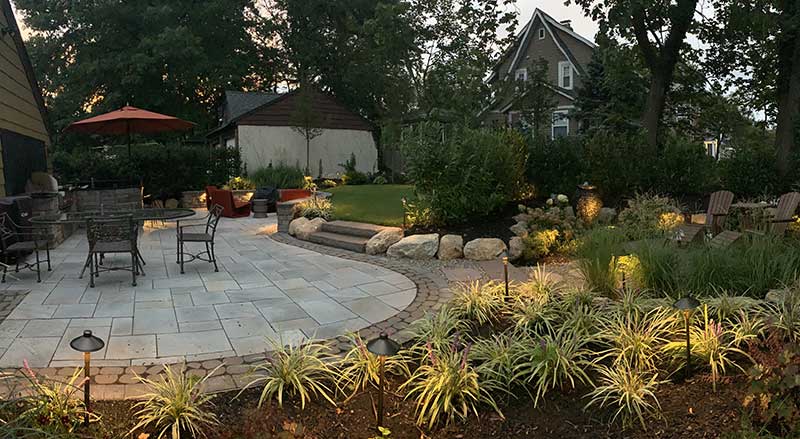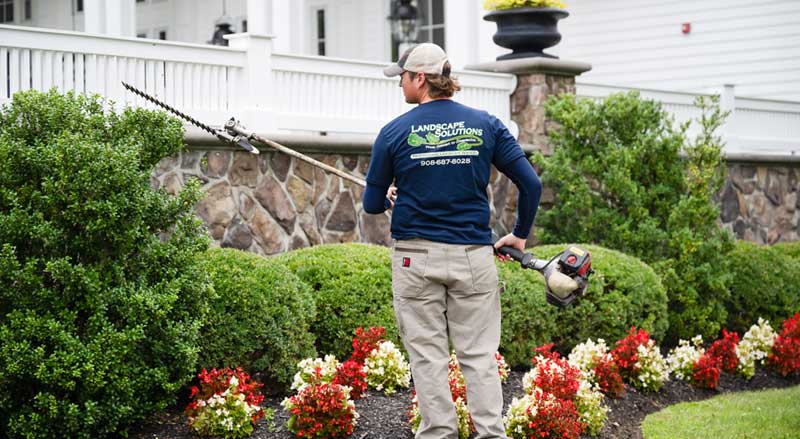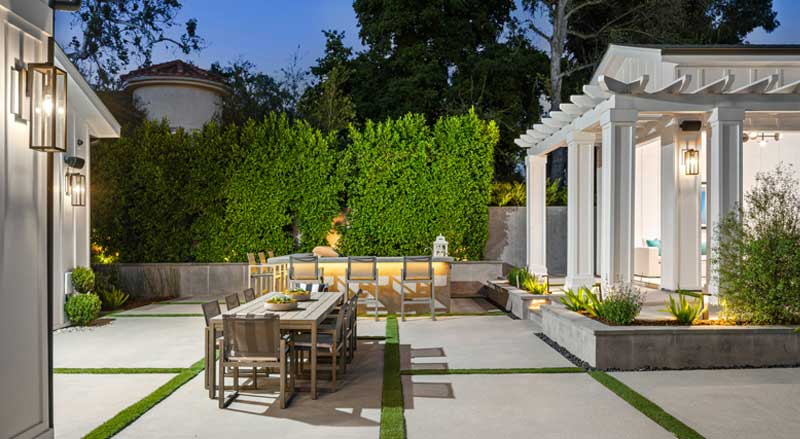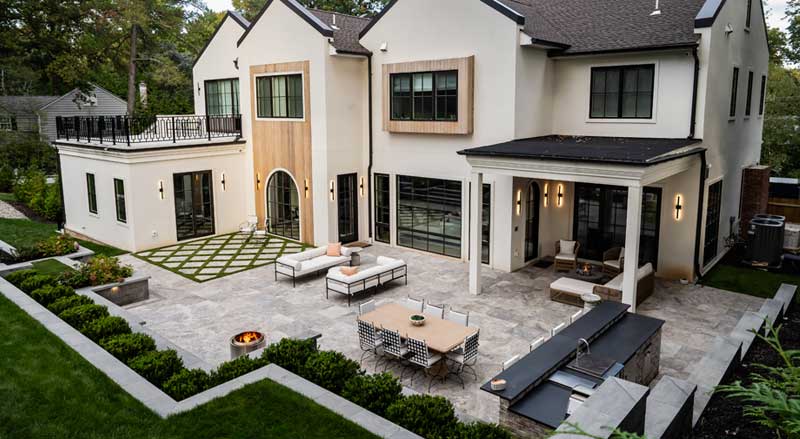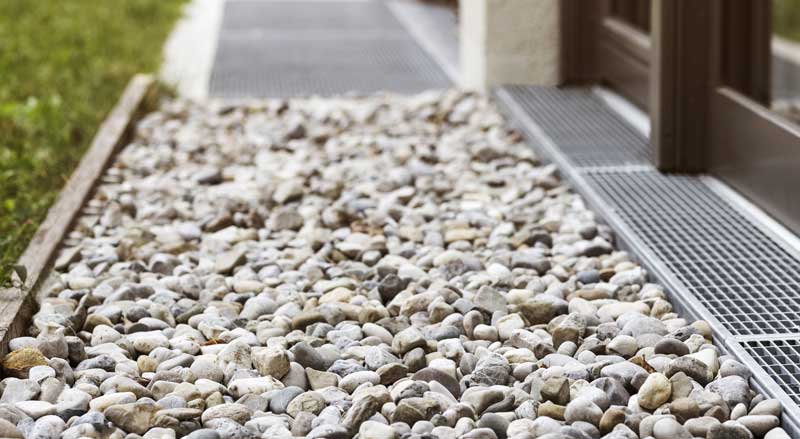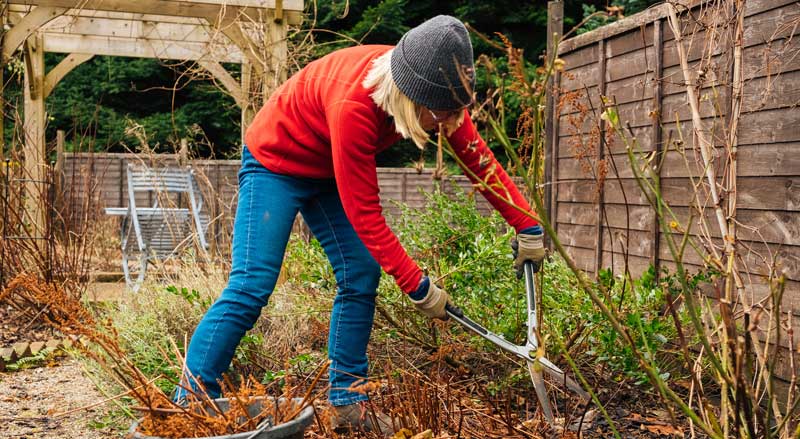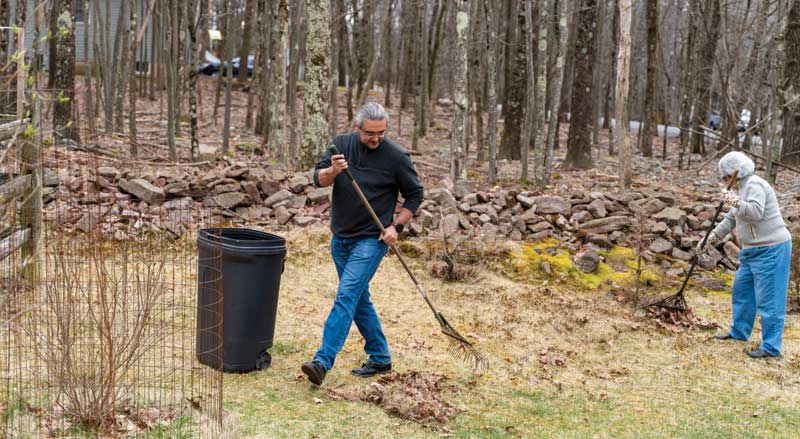Designing your outdoor space is a big project. And it can be an expensive one. So don’t make mistakes that lead to a costly redesign of your landscape—or worse, make it necessary for you to settle for less than your ideal outdoor space.
There’s a lot to think about. You’ll have to make seemingly endless decisions about hardscaping projects and plantings.
But this project is manageable—and even fun—if taken step by step.
Following are guidelines for designing your outdoor space.
Sketch a Landscape Design Layout
To start, sketch out a map of your property to use as a blueprint for your garden design plans. Use your property survey to eliminate the need for measuring. If you don’t have your survey, it’s likely on file at your local municipal building.
Mark off areas to exclude from your redesign.
This can include:
- A sloped hill or uneven terrain
- A densely wooded area
- Permanent structures such as a pool or shed
- Any easement areas
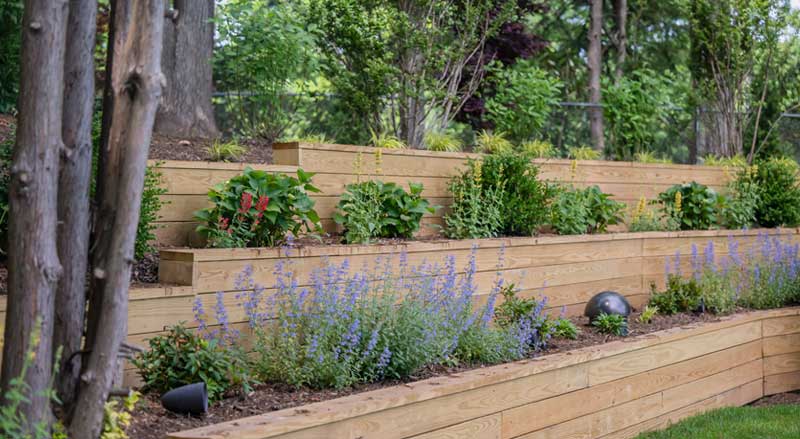
Of course, what one person considers to be unusable, the next person may choose to landscape—such as adding steps and tiered levels to a sloping hill.
Here are some ways to solve common landscaping problems.
Once you mark your blueprint appropriately, you’ll have a clear view of your workable space.
Note areas that need special work, such as areas with poor drainage or rocky soil.
Consider Bringing in the Landscape Professionals
Many people consult a landscape architect or designer in the planning stages to determine an optimal design.
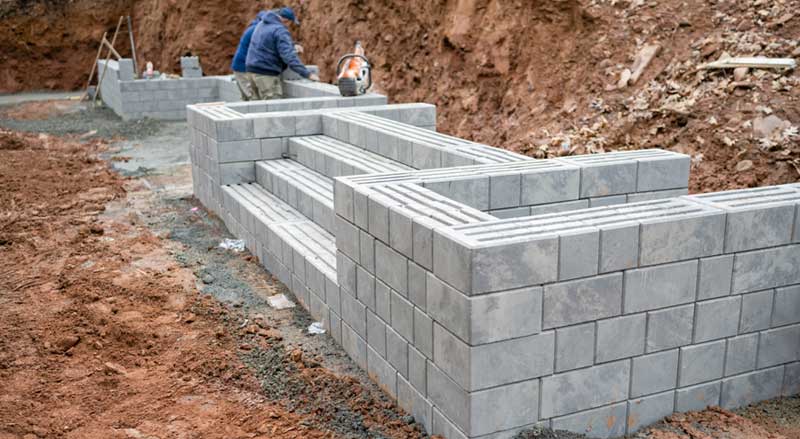
Even if you plan to do much of the work yourself, a landscape contractor can help with the heavy-lifting and other difficult parts of the project.
A major consideration is landscape drainage, which may also require the skills of a landscape professional.
Decide What’s Most Important to You
Now is the time to think about what you want. Determine your goals and try to imagine the outcome.
If you’re planning on selling your property soon, avoid a highly individualized or stylized design. It would be wise to consider the value you will be adding to the home instead.
Here’s how to increase property value with your landscape renovation.
Your outdoor space design is only limited by:
- The size of your property
- Your landscape’s terrain
- Landscape drainage needs
- What you can afford
- What town/city ordinances will allow
List Items in Order of Importance
Items that commonly top a homeowner’s list are:
- Single or multi-level patios
- Dining area for family and guests
- Outdoor kitchen and/or bar
- Play area for children
- Quiet place to read or listen to music
- Vegetable garden
- Planting area(s) for trees and flowers
While you may not be able to fit all your “wants” into your plans, good planning ensures you’ll be able to fit as many as possible.
Create a Landscape Focal Point
Now that you’re ready to start with design, plan your outdoor space’s focal point. The focal point is the area in your yard that first catches the visitor’s attention. It adds visual appeal and balance to your property design.
A focal point can be natural or manmade. For example, a beautiful ornamental tree can be a dramatic focal point.
Common features used as a focal point include a:
- Water feature
- Garden statue
- Rock garden
- Large boulder
Plan Major Components
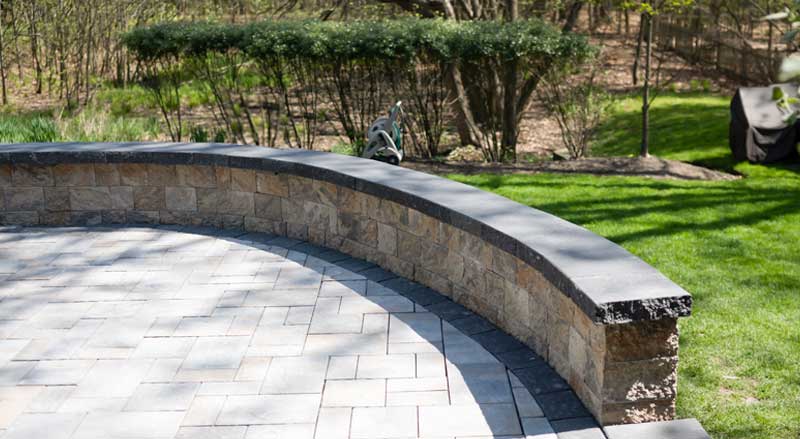
Now sketch into your blueprint spaces you want to include, such as patio location or outdoor kitchen location.
If you have teens but want to entertain adults separately, a multi-level patio may work well for you. Here’s how to plan the perfect patio.
If you’ve always wanted a vegetable garden to grow fresh basil and tomatoes, plan for it where there’s ample sunlight.
Now is also the time to include other items, such as:
- Walkways, paths, and stairs
- Retaining walls
- Gazebos
- Pavilions
- Fire pit or fireplace
- Dog runs
- Child play areas
- Secluded reading area
- Swimming pool
Be sure to note where you’ll need electricity, water, or gas utility lines. Add these lines before any landscaping begins.
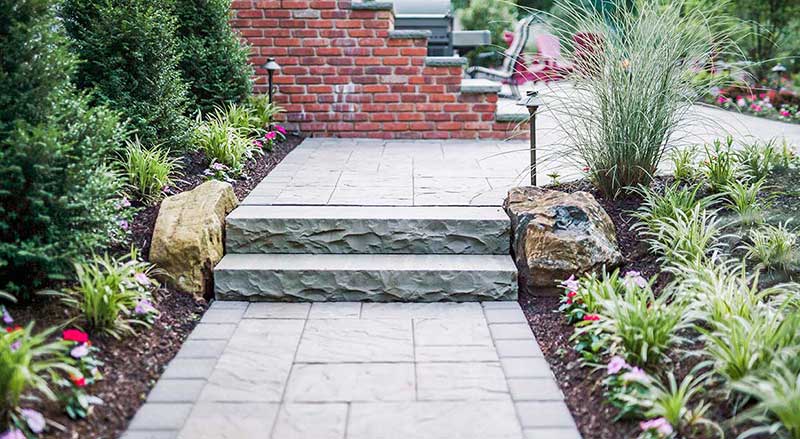
Style and Color Palette
Your home plays a major role in determining the best style and color palate for your outdoor area. Your home and landscape should work together to create a harmonious environment.
Colors don’t have to match but avoid visually jarring color or style combinations. It’s usually best to choose a style and color palette that complements the architecture and the exterior of your home.
Check out Hardscaping Materials
Today there’s a large range of hardscaping materials available.
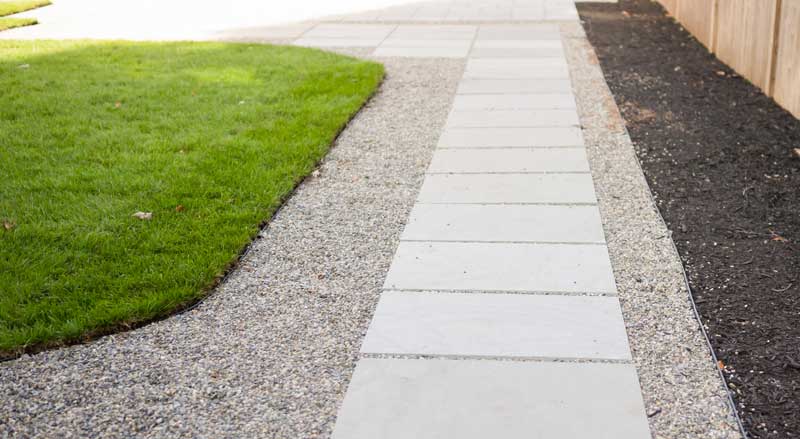
You will do well to work with a landscape professional who can walk you through the myriad of options for your landscape and budget.
Select Trees, Plants and Flowers
Healthy, good quality plants are expensive. Make a list of plants to include so you have a good idea of how to budget.
Know your plant hardiness zone so you can select trees and shrubs that will thrive in your garden. New Jersey’s hardiness zones include zones 6a, 6b, 7a and 7b.
Choose plants that thrive in your specific climate, soil conditions, and sun exposure. Sun exposure and soil conditions play a major role in plant selection.
Only select plants that require as much maintenance as you can provide.
Consider the mature size of plants to ensure they won’t overcrowd the space.
Incorporate a mix of trees, shrubs, perennials, and annuals to provide visual interest throughout the seasons.
Consider using native plants. They will grow better, require less maintenance, and add to a sustainable environment.
A landscape professional can help you select plants that will add interest and color to your garden year-round.
Create a Realistic Budget
Now that you know the scope of your project, determine your realistic budget.
If you need a home equity or other loan to help finance your project, research it now.
Knowing your budget will help you decide what you can take on immediately and guide you in material selection.
And remember, large landscaping projects don’t have to be done all at once. You can break it into phases over seasons or even years.
If You’re Doing the Work Yourself?
Before you start, be sure you have all the necessary permits from your local municipality. Working without permits only results in fines and headaches for the homeowner.
A good rule of thumb is to have the property prepared in late autumn so that you can plant in early spring. You can do other plantings in late summer or fall.
If you want the help of a professional landscaper, contact the company early so you can be added to their work schedule.
At Landscape Solutions we offer complete landscaping services ranging from landscape architecture to hardscaping and planting greenery. Contact us to help create your ideal outdoor space.

